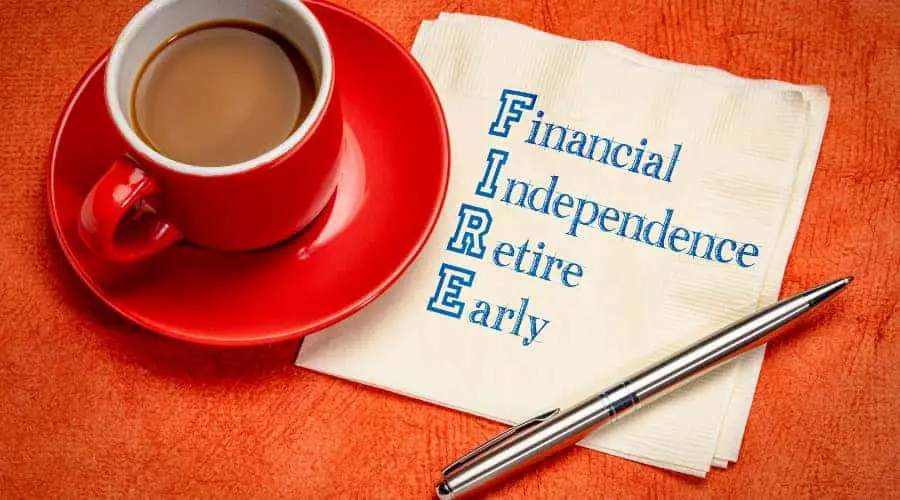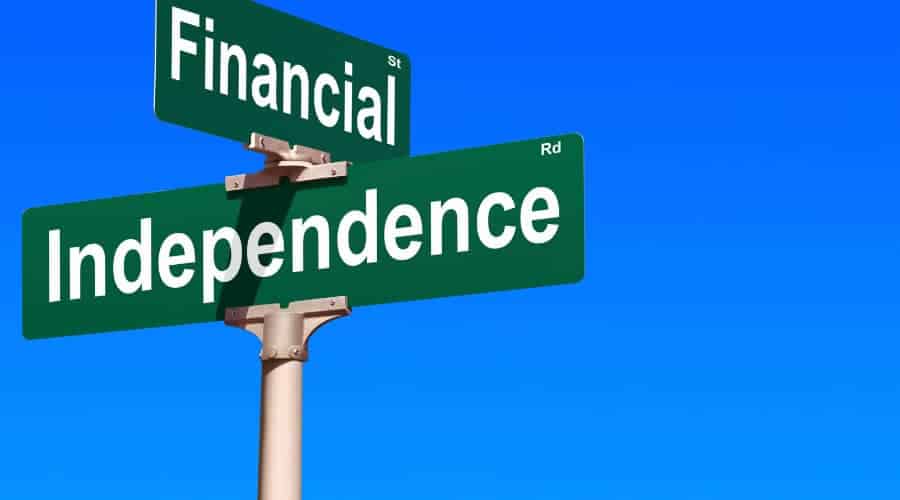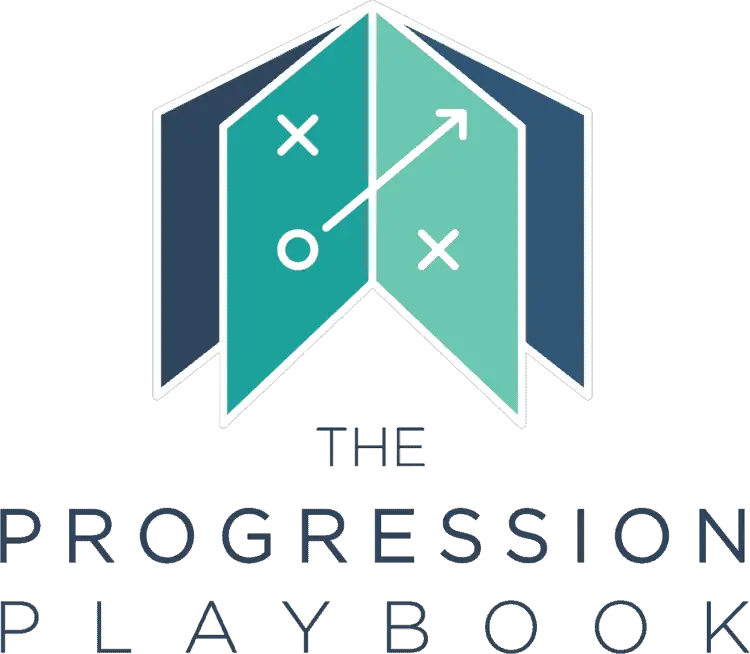The concept of FIRE (which stands for financial independence, retire early) seems to grow in popularity each year with more and more people subscribing to this way of life. What some may not know is that this concept can be further broken down into Lean Fire, Coast Fire and Fat Fire. So, what exactly are these?
FIRE can be broken down into Lean FIRE (your essential expenses are covered by your passive income), Coast FIRE (your early investment contributions allow you ‘coast’ to your retirement number) and FAT FIRE (where your passive income allows you to live a higher-quality lifestyle).
So whilst it’s interesting to note that the financial independence, retire early movement isn’t a one-size-fits-all deal, it does beg the question, which type of FIRE is best for me?
What’s the difference between Lean FIRE, Coast FIRE and Fat FIRE?
The various subsets of the FIRE movement, Lean FIRE, Coast FIRE and Fat FIRE, are separated most simply by the level of your expenses your future passive income will be able to cover. For example, you can Lean FIRE by developing passive income to the point where your essential expenses are covered.
So whilst ‘financial independence, retire early’ is defined slightly differently by each person you ask, I like to think of it as the point in time where your passive income (e.g. your annual investment returns) covers your annual expenses to the point you never have to work for money again.
But there is a problem with this, which is that we’re all different and we all envisage success in different ways.
Lean FIRE proponents will argue that once you get to a point where your passive income can cover your essential expenses (food, bills, shelter) you are financially independent. You can live the rest of your life without *needing* to work for money again.
On the other hand, FAT FIRE proponents don’t view this as a success. They want to save and invest to such a degree that their annual passive income more than covers their basic expenses and allows them to live a luxurious lifestyle.
Coast FIRE is a slightly different concept, rather than focusing solely on the number of expenses your passive income can cover it considers at what stage you have contributed a sufficient amount to your investments to allow the balance to grow over the years to fund your retirement.
For example, if by age 30, you have invested £300,000 and expect this amount to compound into over £1million by retirement age you can say you have reached ‘coast FIRE’ as this future predicted amount will be enough to pay your annual expenses for the rest of your life.

What is traditional FIRE (Financial Independence, Retire Early)
Simply put, traditional FIRE (Financial Independence, Retire Early) is the point at which your passive income can cover your current level of annual expenses and you are not reliant on working, or exchanging your time for money, to cover your bills. At this point, you can choose to retire early.
Prior to the growth of the FIRE movement, people used to think of the concept of financial independence as simply being able to pay your own way through life, not reliant on a parent or partner. It’s not uncommon for young adults starting their first job to describe themselves as financially independent, as they are now able to live without depending on the use of another’s money.
However, the FIRE movement thinks of this concept differently. You can claim to be financially independent and have the choice to retire early only once your annual expenses are covered by your passive income.
One of the most frequent ways of calculating this is by using the 4% rule to reverse-engineer the amount of money you would need to be invested in the stock market (or other asset classes with sufficiently high average returns) in order to cover your expenses off of the passive investment income alone.
As an example, let’s say your annual expenses are £30k per year and this covers your mortgage, food, holidays, clothes, bills and a few other luxuries.
For a rough estimate of how much you would need in order to consider yourself financially independent, simply divide this number by 4% (or multiply it by 25, which is mathematically the same thing)
£30,000 / 4% = £750,000.
Or, stated differently:
£30,000 * 25 = £750,000
Based on this, you would need to accrue total invested capital of £750,000 in order to safely withdraw £30,000 per year for the rest of your life without worrying that your money would run out.
The logic behind this is simple – as you take out 4% of your portfolio each year to spend, the invested asset returns replenishes your investment money. For more on the 4%, have a read of this post.
What is ‘Lean FIRE’?
Lean FIRE (financial independence, retire early) is when you have a sufficient amount of assets invested so that your passive investment income can cover only your essential expenses such as shelter, food and healthcare. This is the easiest type of FIRE to achieve.
The biggest advantage of Lean FIRE is that it’s the most realistic FIRE type to achieve for most people. Continuing our example from above where we said we had annual expenses of £30,000 – to become financially independent in the traditional sense, you would need £750,000 of invested assets.
If we were to imagine that of the £30,000 of annual expenses, £15,000 related to the essentials whilst the remainder related to luxuries like holidays, restaurants, nice clothes and social events.
To achieve ‘Lean FIRE’, you would only need £375,000 of invested assets (£15,000 / 4%) which is a much more palatable investing goal.
Due to the human phenomenon of hedonic adaption (humans return to a stable level of happiness over time despite our life events) – embracing Lean FIRE can create a more simple life, less interested in consumerist notions of happiness and comfort which many see as an added benefit of this approach.
My big problem with Lean FIRE is that it seems to be blind to changes in circumstances. Sure, your essential expenses may be £15,000 right now, but what if a family member requires expensive private medical treatment in the future. This hasn’t been factored into the Lean FIRE equation and may result in a retired individual having to return to work to top up his investments.
What is ‘Fat FIRE’?
Fat FIRE (financial independence, retire early) is where your accumulated investments are so large, the passive income earned allows you to live a high-quality, luxurious lifestyle in perpetuity. This type of FIRE allows for a higher level of annual expenses but this comes at the cost of having to work for longer to earn sufficient money.
Continuing our example from above where we had annual expenses of £30k, what if we decided we wanted to spend our retirement living a life of luxury with a few extra holidays a year.
If it was decided this would require annual living costs of £50,000 per year, we would need to accumulate £1,250,000 (£50,000 / 4%) in invested assets to make this a reality. Clearly accumulating this level of wealth will require an extremely well-paid job or business venture or many years of scrupulously saving and investing.
Having been introduced to the concept of financial independence by the excellent Mr Money Mustache website, frugality and living within your means has always been an appealing part of the journey for me which makes FAT fire appeal slightly less.
Many people get the concept of frugality confused with being cheap – if in doubt, consider this example: going out every night and always letting other people buy your drinks without ever returning the favour is cheap. Going out rarely but getting the drinks in when it’s your turn is frugal.
The big advantage of FAT FIRE is it builds in a nice cushion in case things go wrong somewhere but for me, the idea of working another 10 years to be able to live a slightly more flashy life in old age is not an appealing bargain.
What is ‘Coast FIRE’?
Coast FIRE is a unique subset of the FIRE movement in which individuals can ‘coast’ to the point of financial independence by saving and investing aggressively whilst young and then allowing these assets to compound and grow over time into a sufficiently large nest egg for retirement.
For example, let’s say a financially savvy 30-year-old has managed to accumulate £200k in invested assets and hopes to retire by 50.
Using a standard future value calculator, this £200,000 will be worth over £900,000 by age 50 assuming an annual growth rate of 8%. This really underscores how important saving and investing as early as possible is.
Under the ‘coast FIRE’ mantra, this individual need not contribute to his investments again and will still have over £900k of assets for his retirement. Using the 4% rule discussed above, this equates to £36,000 per year of annual expenses that could be covered which is a pretty decent quality of life in most locations.
This is clearly a useful landmark on the way to financial independence but I don’t think coast FIRE can be considered genuine financial independence simply because between the ages of 25 and 50 in our example above, the individual would still need to work to cover their annual expenses in the interim period.
If we return to our definition of financial independence from above – “the point at which your passive income can cover your current level of annual expenses and you are not reliant on working, or exchanging your time for money, to cover your bills.” – coast FIRE doesn’t seem to fully qualify.
Which type of FIRE should I strive for – Traditional, Lean, Coast or FAT?
Which type of FIRE you aim for – Lean, Fat or Coast – will be entirely dependent on your individual preferences, current financial situation and attitudes to money. There is no one approach that fits everybody. Deciding what suits you, setting it as a goal and pursuing it consistently is the aim.
In my opinion, the first port-of-call is deciding whether on not pursuing financial independence is something that interests you. Many people who claim to love their job suggest they are not interested in this concept because they hone in on the ‘retire early’ part, which is not something that appeals to them.
Even if you love your job and can’t see yourself ever retiring, does it not make sense to work towards a position of financial independence so you are not financially tied to your work and are able to take time off should you or your family require it?
When it comes to focusing on a specific type of FIRE you are aspiring towards, the real question becomes what level of expenses you realistically see yourself having in the future.
If you have low expenses with little beyond your essential living expenses, Lean FIRE is probably the most useful model for you. Whereas if you plan a life filled with more luxuries, FAT Fire may be the right path, even if it requires more saving and investing in the short term.
As discussed above, coast fire is best considered as a way-marker on the way to full financial independence.

How do I calculate my FIRE (Financial Independence, Retire Early) number?
You can calculate your FIRE number (i.e. the amount you need to have invested in order for your passive income to cover your expenses) by using the 4% rule. Whilst imperfect, the 4% rule states that you need to invest 25 times your annual expenses to reach financial independence.
The below table lays out your approximate ‘FIRE number’ based on your annual expenses, starting from a very frugal £10,000 to a very extravagant £100,000 per year.
| Annual expenses | Amount required to be invested in stocks (multiply by 25) |
| £10,000 | £250,000 |
| £20,000 | £500,000 |
| £30,000 | £750,000 |
| £35,000 | £875,000 |
| £40,000 | £1,000,000 |
| £50,000 | £1,250,000 |
| £75,000 | £1,875,000 |
| £100,000 | £2,500,000 |
Apps to help your FIRE journey
There are many apps that can help you track your progress on your journey to financial independence. ‘Topia’ is a great example that allows you to model your investments, future life events and current savings rate to work out how many days from being able to retire you are.
The logic of the 4% rule discussed above underpins the calculations behind the app – for more, please read my post on Topia.
To download, simply search ‘Topia’ in your operating systems app store.
Best Financial Independence, Retire Early (FIRE) calculators
There are many helpful FIRE calculators that can be found online including those built into apps such as Topia. Most calculators are based on the simple math of the 4% rule with the caveat that you can adjust the safe withdrawal rate from 4% to whatever rate you are comfortable with.
As always, please remember I am an Accountant, but not your Accountant. In this post (and all of my others) I share information and oftentimes give anecdotes about what has worked well for me. However, I do not know your personal financial situation and so do not offer individual financial advice. If you are unsure of a particular financial subject, please hire a qualified financial advisor to guide you.
This article has been written by Luke Girling, ACA – a qualified Accountant and personal finance enthusiast in the UK. Please visit my ‘About‘ page for more information. To verify my ACA credentials – please search for my name at the ICAEW member finder. Please comment below or contact me here to get in touch with questions or ideas for future posts.
